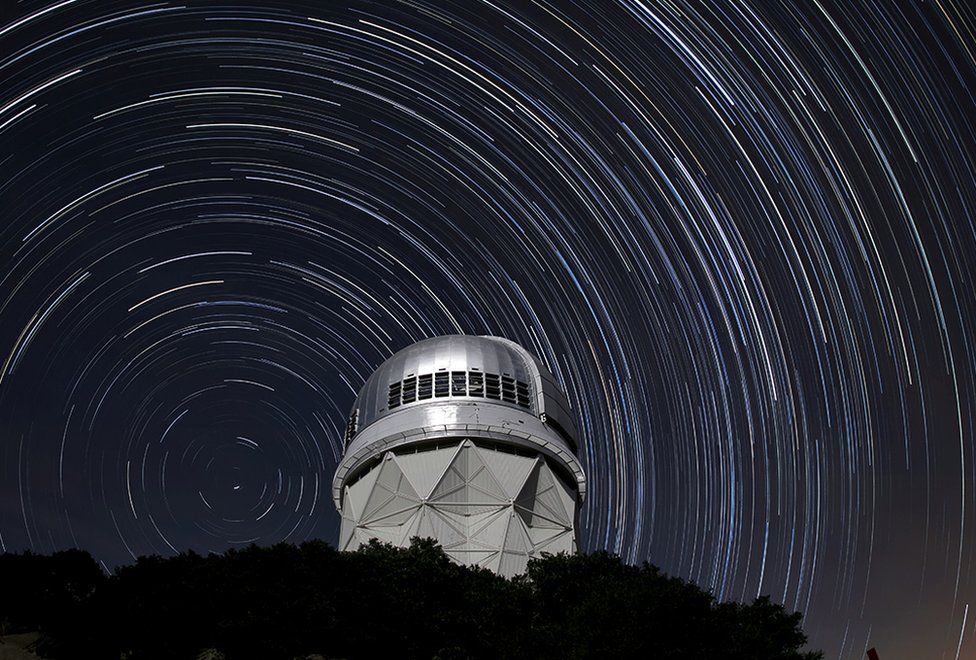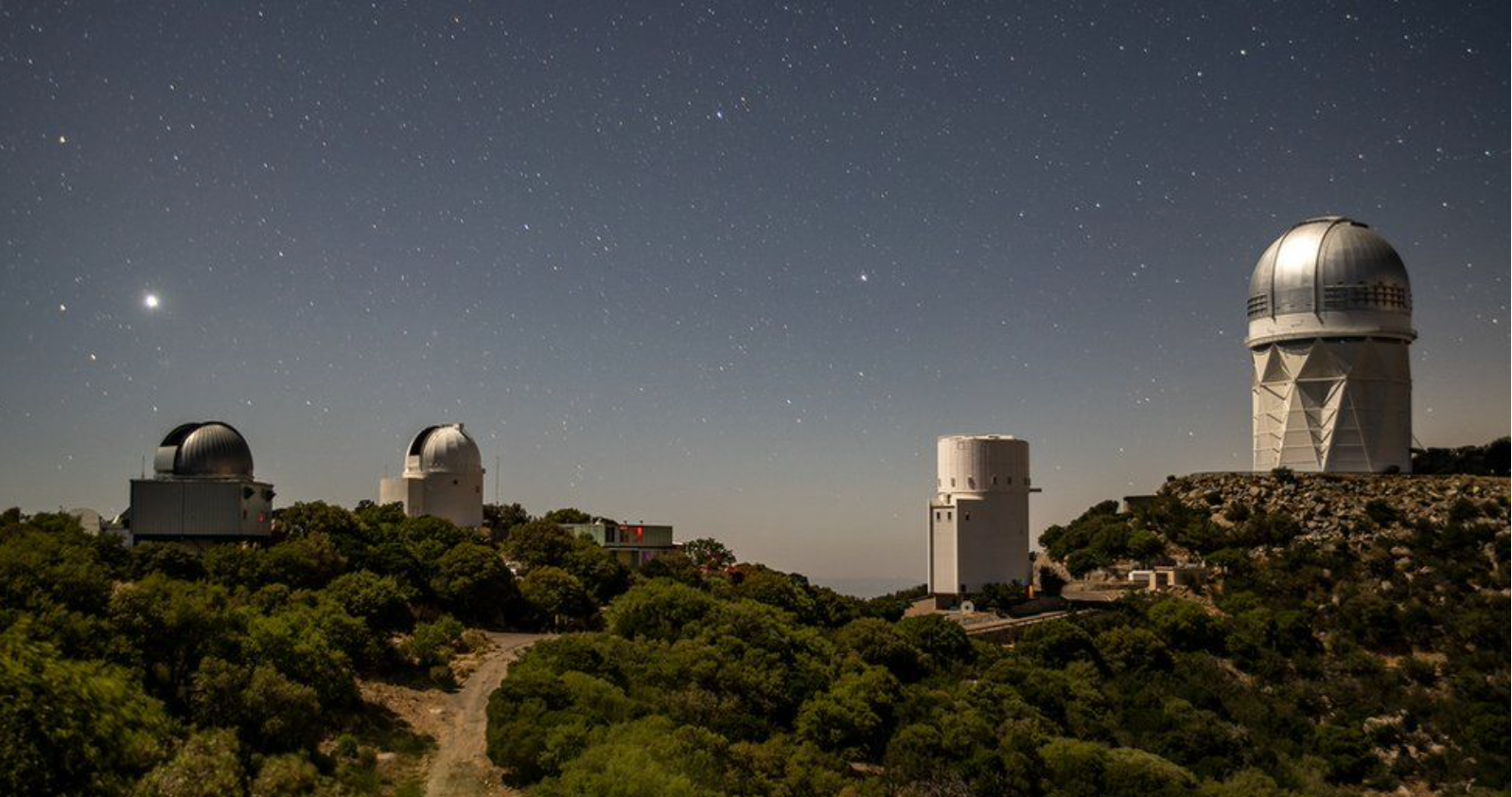An international team of scientists has produced the most detailed three-dimensional map of the Universe yet.
Within seven months, their Dark Energy Spectroscopic Instrument (DESI) has broken all 3D galaxy survey records.
A component built by Durham University increases the telescope’s field of view using 5,000 optical fibres.
Prof Carlos Frenk from its Institute for Computational Cosmology said DESI’s data would “help uncover some of the most intimate secrets of the cosmos”.
He said: “This will help us to search for clues about the nature of dark energy.
“We will also learn more about the dark matter and the role it plays in how galaxies like the Milky Way form and how the universe is evolving.”
international team of scientists has produced the most detailed three-dimensional map of the Universe yet.
Within seven months, their Dark Energy Spectroscopic Instrument (DESI) has broken all 3D galaxy survey records.
A component built by Durham University increases the telescope’s field of view using 5,000 optical fibres.
Prof Carlos Frenk from its Institute for Computational Cosmology said DESI’s data would “help uncover some of the most intimate secrets of the cosmos”.
He said: “This will help us to search for clues about the nature of dark energy.
“We will also learn more about the dark matter and the role it plays in how galaxies like the Milky Way form and how the universe is evolving.”

The fibre-optic system splits light from galaxies, stars and a bright variety of galaxy known as quasars into narrow bands of colour.
This reveals their chemical make-up, how far away they are and how fast they are travelling, allowing researchers to gauge how much and how fast the universe has expanded.
The final 3D map will give scientists a better understanding of dark energy, which accounts for 70% of the universe and drives expansion.
DESI is producing data relating to 11 billion years ago which can shed light on the early universe.
Victoria Fawcett, a PhD researcher at Durham University’s Centre for Extragalactic Astronomy, said DESI was obtaining much fainter and redder objects than previously discovered.
“We’re finding quite a lot of exotic systems including large samples of rare objects that we just haven’t been able to study in detail before,” she said
Scientists are also using the data to understand the behaviour of medium-sized black holes in small galaxies.
DESI has already catalogued more than 7.5 million galaxies and is expected to have added another 27.5 million by the end of its run in 2026.
The collaboration is managed by the Lawrence Berkeley National Laboratory in the USA.
Originally reported here: https://www.bbc.co.uk/news/uk-england-tyne-59974215






